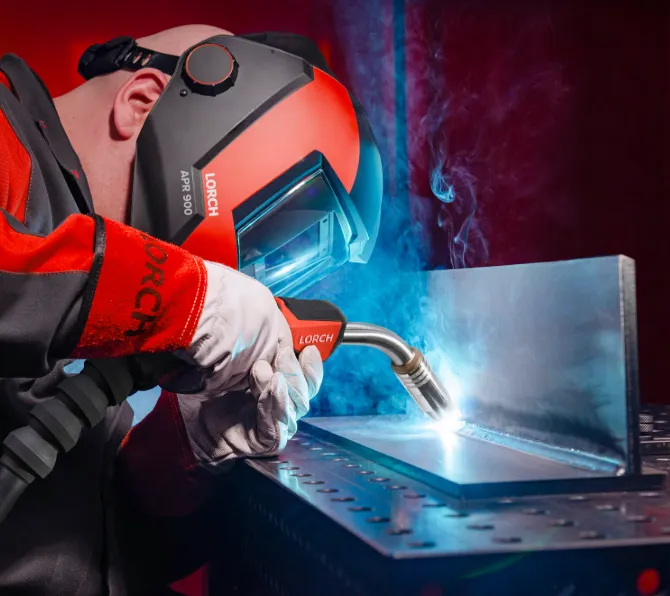Choosing the correct torch mount is crucial for improving efficiency and quality on the welding production line. Understanding the different types of torch mounts available and how they can enhance your system will help you achieve optimal results. In this guide, we’ll explore the key differences between torch mount styles, their advantages, and how to evaluate and implement them for your robotic welding system.
Types of Torch Mounts: Over-Arm vs. Through-Arm
When it comes to robot welding, two main torch mounting options are available: through-arm and over-arm. Each has its benefits and specific use cases depending on the task at hand.
Through-Arm Torch Mounting: Clean and Efficient
The through-arm mount has become the more common choice for modern robotic welding. This setup offers a cleaner design and provides better clearance, especially in tight spaces. The elimination of brackets and fittings reduces the overall hardware and minimizes the potential for issues during setup and operation. Through-arm technology simplifies programming, reducing the chances of encountering technical difficulties during the welding process.
Through-arm torches can be equipped with collision mounts or solid mounts. Collision mounts are highly beneficial as they allow for quick detection of any collisions. If the torch comes into contact with fixtures or other objects, the system shuts down the torch to minimize damage. Alternatively, solid mounts can be paired with external collision detection software. This software monitors the motor amperage, and if the motor experiences a sudden rise outside of its expected range, the system will preemptively shut down to avoid any potential damage.
When evaluating a solid mount, it’s important to assess its strength and repeatability. Factors to consider include the dowel pin size, the positioning of the pins, the material used for the mount, and the thickness of the flange that attaches to the robot.
Over-Arm Torch Mounting: Flexibility and Easy Maintenance
Over-arm torch mounting was one of the original robotic welding configurations and is still used for specific applications that require versatility. This setup allows the torch to be positioned at angles that may be difficult or impossible to achieve with a through-arm mount. However, over-arm setups require more modification and time to implement.
One advantage of over-arm mounting is easier maintenance. Since the entire torch package is mounted outside the robot arm, maintenance tasks can be completed more quickly and easily compared to through-arm setups. Over-arm mounts also feature shock sensors and a series of dowels that allow the robot to handle direct impacts in the Z direction without causing major damage.
Similar to through-arm setups, over-arm torches can use solid or collision mounts. Ensuring the robot has on-board collision sensing is key to maximizing safety and performance. Another consideration when using over-arm mounts is evaluating the torch angle, mount patterns, and clearance. A good over-arm mount provides a strong point for potential crashes, making it easier to replace damaged parts such as the torch neck rather than the entire mount.
If you opt for a breakaway style torch mount, installation must be precise. The right adapter plates and spring pressure must be chosen based on the torch’s weight and equipment requirements to ensure proper functionality.
Best Practices for Torch Mounting
When selecting and installing a welding torch mount, it’s essential to focus on repeatability, ease of installation, and the effectiveness of the collision sensor. Evaluating the accuracy of the mount’s positioning is critical for ensuring a consistent and high-quality weld. A reliable torch mount will maintain consistent repeatability, which reduces the need for rework and keeps production rates high.
Both through-arm and over-arm mount styles should be assessed based on their stability and minimal number of bolt-up components. A mount with fewer components provides a stronger, more reliable structure, which leads to better overall performance and fewer adjustments during operation.
Conclusion
The correct choice of torch mount for your robotic welding system is crucial to maintaining high productivity and quality. Whether you choose a through-arm or over-arm setup, understanding the strengths and limitations of each will help you optimize your production line. Pay careful attention to factors like collision detection, mounting patterns, and repeatability, and always ensure that your system is designed to minimize downtime and maximize welding precision. With the right torch mount, your robotic welding system will perform at its best, delivering exceptional results every time.







